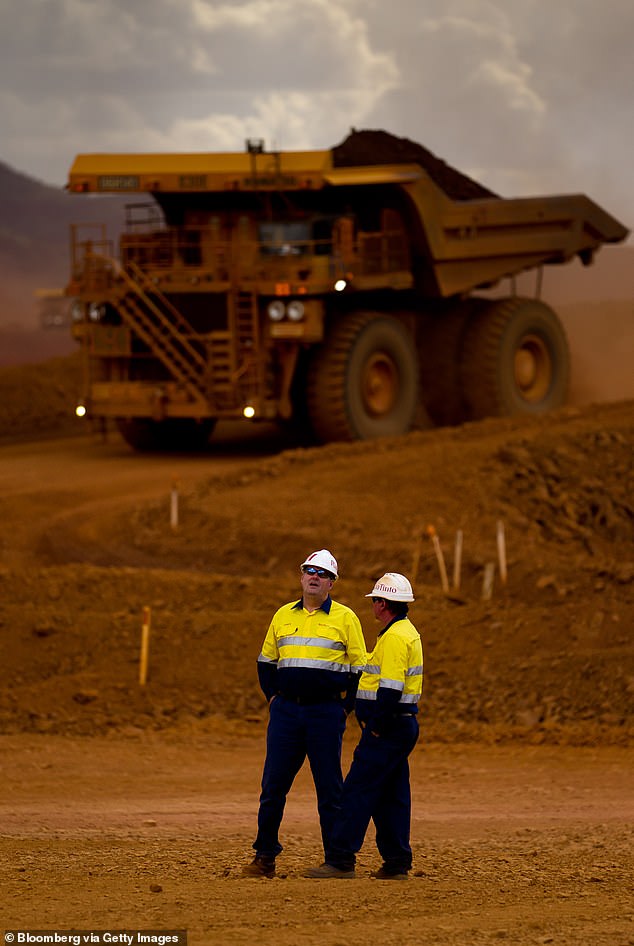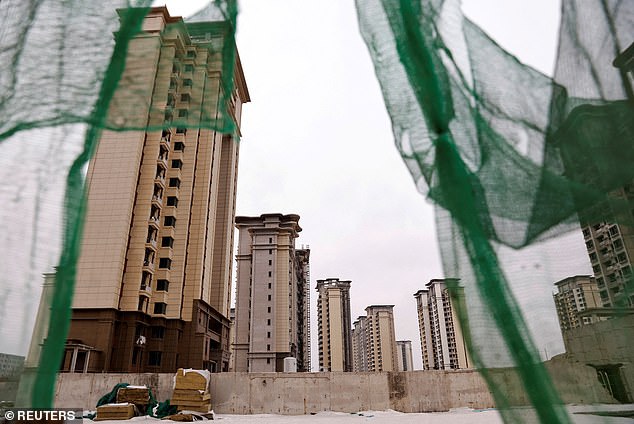Australia is in economic trouble as China’s property crisis hits the country’s trading position.
The fall in iron ore prices since May has worsened Australia’s current account balance, or what Australia financially owes to the rest of the world.
New balance of payments data showed Australia ran a current account deficit of $10.7 billion in the June quarter, its worst since mid-2018.
In December alone, Australia had a current account surplus.
Until recently, rising prices for iron ore, the commodity used to make steel, had meant the rest of the world owed Australia in terms of the flow of goods, services and income.
From mid-2019 to the end of 2023, Australia had only experienced two quarters of current account deficits, while China was still consuming large quantities of steel to build apartment towers.
Australia enjoyed successive current account surpluses for the first time since the early 1970s, setting new records.
As of September 2021, Australia had a current account surplus of $22.1 billion, despite China’s sanctions on Australian coal, as the Communist Party nation was still dependent on Australian iron ore and had few other options.
Australia is really in economic trouble as China’s property crisis affects the country’s trading position (pictured are unfinished apartment towers in Hebei province)
But the collapse of Chinese apartment developer Evergrande earlier this year has sent the property market into a tailspin in the economy of Australia’s biggest trading partner.
Australia now runs current account deficits rather than current account surpluses because the gap between the value of exports and imports has been narrowing.
Commonwealth Bank senior economist Belinda Allen said falling demand for Australian resources had worsened Australia’s current account deficit.
“Lower commodity prices such as iron ore and coal are the main drivers of this deterioration,” he said.
Iron ore prices fell to US$98.70 per tonne in May from US$119 per tonne, based on cost and freight prices quoted by financial markets.
The Treasury is alarmed and forecasts dramatic declines early next year that will hurt government revenues and lead to larger budget deficits.
The Budget predicted that iron ore prices would almost halve to just US$60 per tonne by the March 2025 quarter, based on the value before transport costs are taken into account.

The fall in iron ore prices since May has eroded Australia’s current account balance, or what Australia owes to the rest of the world (pictured is a Rio Tinto mine in Western Australia)
Every $10-per-tonne drop in iron ore prices equates to a loss of $500 million in potential revenue for the government and the value of this key commodity has, since the start of 2024, plummeted by 38 per cent.
Anthony Albanese is the first Labor Prime Minister since 1989 to preside over two consecutive budget surpluses.
But the $9.3 billion surplus for 2023-24 was underpinned by high iron ore prices that boosted corporate tax revenues.
The budget deficit is forecast to reach $28.3 billion in 2024-25, rising to $42.8 billion in 2025-26.
Economists expect national accounts data for the June quarter, due on Wednesday, to show annual economic growth of just 0.9 percent.
This would be the weakest gross domestic product expansion since the 1991 recession, outside of the 2020 pandemic.
Adam Boyton, ANZ’s head of Australian economics, said the third-stage tax cuts and $300 electricity rebates were unlikely to stop households from cutting spending to cope with the most aggressive interest rate rises in a generation.

